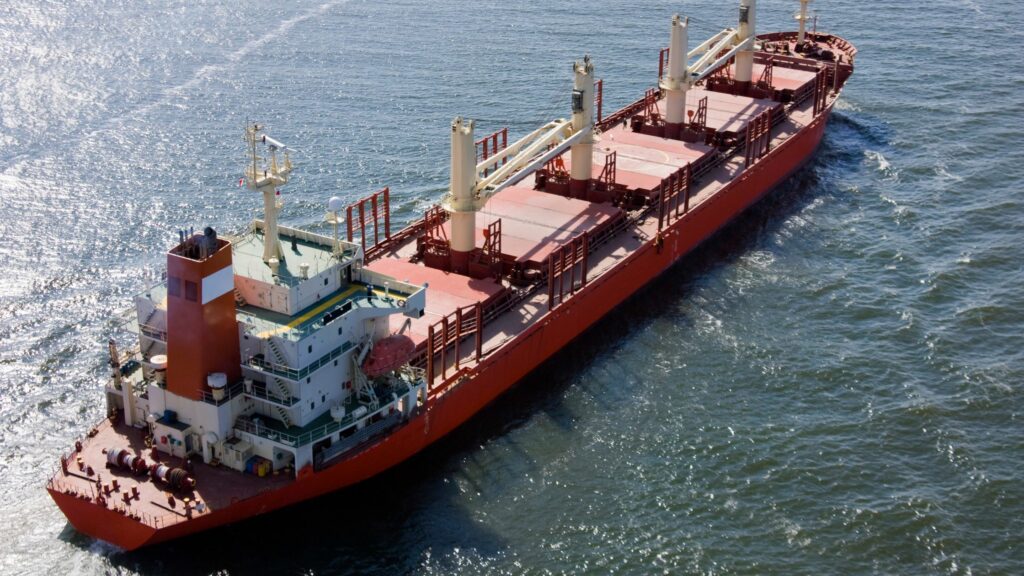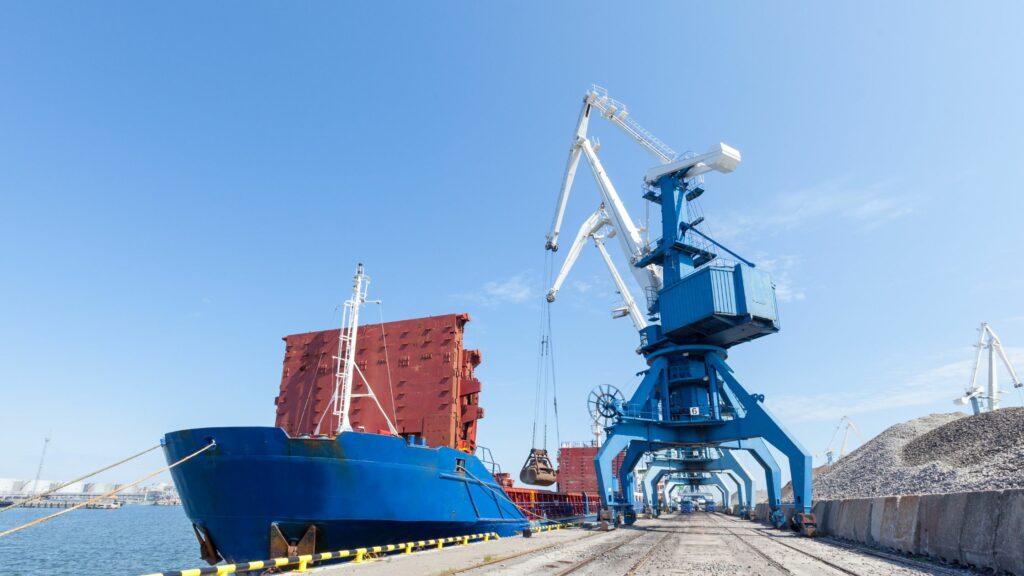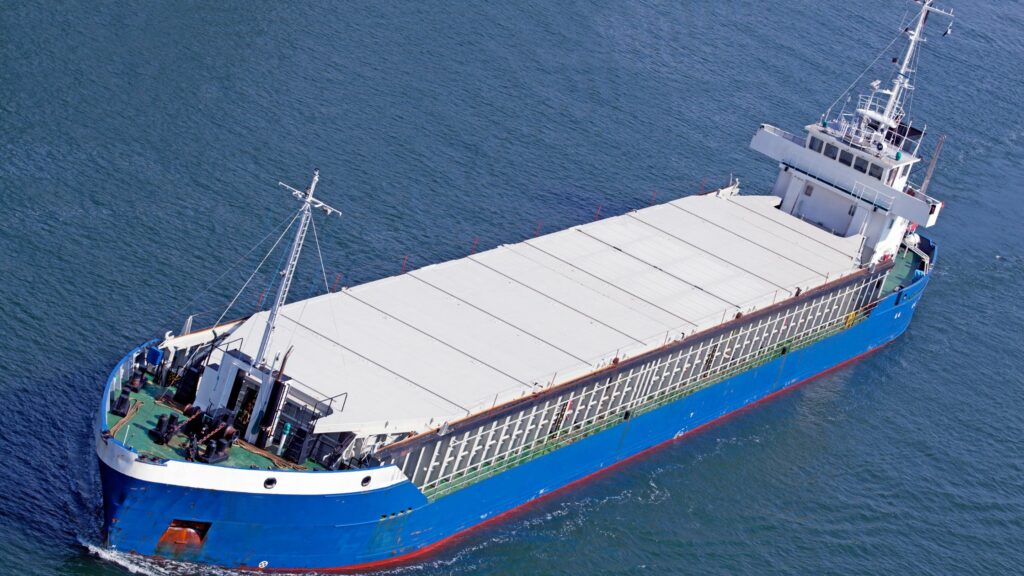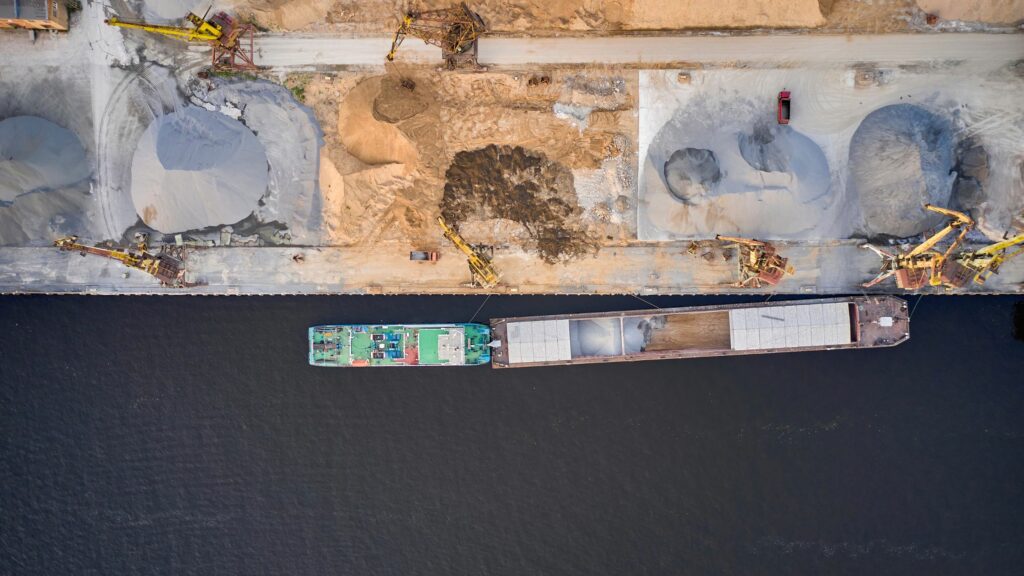Physical Address
304 North Cardinal St.
Dorchester Center, MA 02124
Cement bulk shipping might not capture the headlines like oil tankers or container ships, yet it plays a foundational role in the global economy, underpinning the construction industry with its capability to move massive quantities of cement across oceans. It distinguishes itself with an efficiency and specialization that ensure the lifeblood of urban development flows uninterrupted. This sector’s unique position in the maritime world offers a specialized service that sets it apart from other forms of bulk shipping, providing a critical link in the construction supply chain.

Key players in this niche include Panamax and Handysize vessels, each designed for optimal performance in their respective roles. Additionally, specialized equipment and techniques for handling cement, such as pneumatic discharge systems and advanced loading technology, underscore the industry’s unique characteristics. Delving deeper, each aspect of cement bulk shipping—from the design of the vessels to the logistics of port operations—reveals a layer of complexity and innovation.
The industry not only navigates the challenges of transporting a product that is both ubiquitous in use and demanding in handling but also adheres to stringent environmental and safety regulations. The following sections will unpack these elements, shedding light on the intricate dance of logistics, technology, and regulation that enables cement to continue building the world’s infrastructure.
Cement bulk shipping stands as a pivotal element in the global construction industry, facilitating the seamless flow of this essential building material across the globe. Specialized in nature, this sector leverages specialized vessels and logistical precision to uphold the backbone of urban development and infrastructure projects worldwide. Emphasizing efficiency and sustainability, the industry adeptly navigates through a myriad of logistical challenges and stringent regulatory landscapes to cater to the burgeoning demand for construction materials.
This overview ventures into the intricacies of the cement bulk shipping industry, spotlighting the types of ships in operation, alongside innovative handling and storage solutions that ensure the safe and environmentally friendly transport of cement. As we unravel the layers of cement bulk shipping, we illuminate the critical links it establishes within the global trade network, underscoring its profound significance in the broader economic and environmental spheres. Through this lens, we gain a deeper appreciation for the complex yet fascinating world of cement bulk shipping, a domain where logistics, technology, and regulation converge to build the foundations of our modern world.
Cement’s pivotal role in global trade is underscored by its foundational contribution to construction projects around the world. Essential for the development of infrastructure such as homes, hospitals, bridges, and roads, cement drives economic growth and urbanization. As a heavily traded commodity, it exemplifies the interconnectedness of global markets, cementing its status as a crucial element within the international construction supply chain.
In the realm of the dry bulk shipping industry, cement claims its place as a primary commodity, transported in vast quantities across oceans. This sector, dedicated to the movement of unpackaged bulk cargo, is intricately linked with cement, necessitating specialized vessels and handling techniques. The bulk transportation of cement not only highlights the operational efficiency and economic advantages of shipping large volumes but also showcases the industry’s indispensable role in making construction materials globally accessible.
Through this integral relationship, cement bulk shipping emerges as a key pillar in the logistical network that supports the flow of construction materials on an international scale.
Cement, a cornerstone material in the construction sector, is distinguished into various types and subtypes, each designed to meet specific construction needs and environmental conditions. The most prevalent type, Portland Cement, stands as the backbone for myriad construction endeavors, prized for its strength and durability. For instance, Portland Cement is extensively used in the construction of skyscrapers and bridges, where its strength is paramount. Basically, the ultimate resistance of the concrete produced by any given cement product, depends on te amount and concentration of clinker used for the manufacturing of the cement.
Recent advancements include the development of Low Carbon Portland Cements, aiming to reduce the environmental footprint of construction projects. Blended Cement, another key category, merges Portland Cement with supplementary materials like fly ash or slag, aiming to enhance certain characteristics such as chemical resistance and environmental sustainability. Blended Cement finds its application in projects requiring reduced environmental impact, such as sustainable building certifications.
Innovations in this category have focused on optimizing the mix of supplementary materials to enhance performance and sustainability. Hydraulic Cement, notable for its quick setting and hardening capabilities under water, is essential in projects demanding water resistance. It is crucial for the construction of underwater structures, dams, and water treatment facilities.
The latest research in Hydraulic Cement has been directed towards improving its setting time and durability under extreme aquatic conditions, making it more versatile for marine construction.
Cement production is a truly global enterprise, with China standing at the forefront as the world’s largest producer, significantly impacting both the domestic and international cement markets. Following China, India, the United States, and various European Union countries emerge as major contributors, each boasting substantial manufacturing capabilities to meet both local and export demands. The Middle East, notably Saudi Arabia and the United Arab Emirates, distinguishes itself in the export landscape, utilizing strategic locations to act as pivotal suppliers across continents.
This geographical diversity in production and exportation highlights the cement’s critical function in fueling global construction and infrastructure development, mirroring its universal demand and foundational significance in the modern world. To provide a clearer picture of the cement industry’s landscape, the following table includes statistics on production volumes, export quantities, and the percentage share of global cement production, alongside highlighting any trends such as increases in production capacities or shifts in major exporting countries.
| Country | Production Volume (Million Tonnes) | Export Quantity (Million Tonnes) | % of Global Production | Trend/Notes |
|---|---|---|---|---|
| China | 2,200 | 35 | 55% | Leading global producer, focusing on domestic demand |
| India | 340 | 7 | 7% | Rapidly increasing production capacity |
| United States | 88.5 | 1 | 1.4% | Steady growth in production |
| Vietnam | 96 | 31.5 | 1.5% | Emerging as a major exporter |
| Saudi Arabia | 63 | 9 | 1% | Strategic location for exports to Africa and Asia |
| United Arab Emirates | 49 | 21 | 0.8% | Significant export volumes despite smaller production |
| Turkey | 77 | 15 | 1.2% | Increasing exports to the European market |
| Brazil | 72 | 0.4 | 1.1% | Focused on domestic consumption |
| Germany | 30 | 4 | 0.5% | High-quality cement exports to EU countries |
| Egypt | 55 | 10 | 0.9% | Major supplier to the Mediterranean and Africa |
Efficient and safe transportation of cement from its production facilities to usage sites is crucial for the construction industry’s supply chain. The bulk carrier ships stand out for maritime transport, leveraging economies of scale to ferry vast quantities across the seas. For inland distribution, railway and road transport provide the necessary flexibility and reach, ensuring cement’s accessibility even in the most remote locations. Sometimes, it is more efficient to ship the clinker alone in order to use it locally to manufacture cement at the destination.
Near production or consumption areas, conveyor systems offer a streamlined, cost-efficient solution for continuous material flow. Each transportation method is meticulously selected based on distance, cost-effectiveness, and cargo specifics, ensuring cement’s global availability and affordability.

Cement trade navigates through the world’s arterial waterways, connecting the largest producers to global markets. The Panama Canal and Suez Canal stand out as critical conduits, enhancing trade efficiency between Asia and the Americas, and Asia and Europe, respectively. The Strait of Malacca emerges as an essential maritime corridor, especially for shipments to and from the burgeoning Southeast Asian markets.
These strategic routes, complemented by trans-Pacific and trans-Atlantic passages, are the lifelines of the cement trade, facilitating the seamless global distribution of this vital construction material.
At the heart of the global cement trade lie pivotal ports such as Shanghai, Rotterdam, and Jebel Ali in Dubai. Shanghai, a nexus of export for China, the world’s top cement producer, plays a vital role in the supply chain. Rotterdam, renowned for its expansive facilities, serves as a gateway to Europe, whereas Jebel Ali, a linchpin in the Middle East, efficiently distributes cement to the African continent.
Equipped with specialized infrastructure for handling and storing bulk cement, these ports ensure the commodity’s integrity and availability for international markets.
The loading and unloading of cement are critical steps that directly influence its quality and the efficiency of its transport. Utilizing pneumatic systems for loading, cement is moved into ship holds through pressurized air, a method that curtails dust emission and product loss. Upon reaching its destination, the unloading employs similar pneumatic mechanisms or gravity-based systems, ensuring a safe and efficient transfer to storage facilities or direct distribution via trucks or trains.
Innovations in these areas have been significant, with ports like the Port of Rotterdam and the Port of Singapore implementing advanced automated systems that reduce loading and unloading times by up to 30%, showcasing a notable improvement in operational efficiency. These processes are underscored by stringent safety protocols, aimed at safeguarding workers and the environment from the risks posed by cement dust. The effectiveness of these procedures is vital, affecting the cost-effectiveness and timeliness of the global cement supply chain, emphasizing their pivotal role in sustaining the construction industry’s demands.
The loading and unloading of cement rely on pneumatic conveyors, which use air pressure to efficiently move the material into and out of a ship’s hold. For operations requiring movement to storage, screw conveyors and bucket elevators offer additional support. These systems are specifically designed to reduce product loss and mitigate environmental impacts, ensuring operations are both clean and efficient.
The Port of Hamburg, for example, has recently upgraded its facilities with state-of-the-art screw conveyors that have increased unloading efficiency by 25%, significantly reducing the port’s overall carbon footprint.
To safeguard against the hazards of cement dust, stringent safety protocols are enforced. Workers are equipped with personal protective equipment (PPE), such as masks and goggles, to prevent inhalation of dust. Dust suppression systems play a crucial role in containing and collecting dust at critical points.
Regular safety training ensures that all personnel are well-versed in operational safety and emergency procedures, maintaining high safety standards. For instance, the Jebel Ali Port has implemented an innovative dust suppression system that has reduced dust emissions by up to 40%, showcasing a commitment to environmental and worker safety.
Efficiency and speed in cement handling are bolstered by automated and mechanized equipment, streamlining the entire loading and unloading process. Real-time monitoring systems allow for immediate adjustments, enhancing operational flow. Preventative maintenance schedules keep equipment in prime condition, minimizing downtime.
Effective logistical planning and coordination with ports and transport services ensure the swift movement of cement through the supply chain, optimizing efficiency at every step. The introduction of automated scheduling systems at major ports has led to a 20% improvement in the speed of cement handling operations, significantly enhancing the supply chain’s efficiency.
The storage and handling of cement are critical to maintaining its quality and ensuring its effectiveness in construction applications. Cement is primarily stored in silos or warehouses, which are specifically designed to shield it from moisture and external contaminants that could impair its binding capabilities. Throughout the transportation and storage phases, conveyance systems play a pivotal role, minimizing the cement’s exposure to the elements and significantly reducing the potential for product loss.
The integration of automation within these processes not only boosts efficiency but also diminishes the necessity for intensive manual labor. Adherence to established best practices in the storage and handling of cement is essential, safeguarding its integrity and ensuring that it consistently meets the rigorous standards demanded by construction projects across the globe. To illustrate, consider the advanced storage solutions implemented by the XYZ Cement Storage Facility in Germany, which utilizes state-of-the-art humidity control systems to maintain optimal storage conditions, significantly reducing spoilage rates.
Similarly, the ABC Cement Plant in Japan has adopted robotic handling systems that automate the loading and unloading process, enhancing operational efficiency and reducing human error.
Cement storage necessitates environments that guard against degradation, with silos and warehouses needing to be both watertight and equipped with adequate ventilation to ward off moisture – cement’s primary adversary. Furthermore, these facilities should be engineered to enable efficient loading and unloading processes, all the while minimizing the cement’s air exposure, which can lead to premature hardening. For instance, the Global Cement Silo Project showcases innovative silo designs that incorporate solar-powered ventilation systems, ensuring a constant flow of air that keeps the stored cement dry without the need for external power sources.
To preserve cement’s quality during storage and transit, handling practices minimize its exposure to air and moisture. Pneumatic systems are favored for transferring cement into storage silos, effectively reducing dust and contamination risks. When in transit, cement is typically conveyed in bulk carriers or specialized containers that are securely sealed to shield against the elements.
The Maritime Cement Logistics Corp. has set a benchmark by introducing sealed container modules with built-in humidity sensors, allowing for real-time monitoring of the cement’s condition during sea transport, significantly mitigating the risk of moisture damage.

Mitigating risks in cement storage and transportation involves a multi-faceted approach. Ensuring regular maintenance of both storage facilities and transport equipment helps prevent potential leaks or contamination. Implementing environmental controls, such as dehumidifiers within storage areas, maintains conditions conducive to cement preservation.
Moreover, the Cement Safety Initiative (CSI) has developed a comprehensive safety and quality training program for industry workers, focusing on best practices in handling, storage, and transport procedures. This initiative has been instrumental in reducing accidents and improving product integrity across the sector.
The global cement industry navigates a complex web of international regulations designed to ensure safety, quality, and environmental stewardship. These regulations influence everything from the production processes to the shipping methods used to transport cement across the globe. Key regulations include the International Maritime Organization (IMO) regulations, which set standards for the safe transport of bulk materials by sea.
Environmental considerations are addressed through international agreements such as the Kyoto Protocol and Paris Agreement, aiming to reduce greenhouse gas emissions from industrial activities, including cement shipping. Quality standards are upheld by ASTM International and the European Committee for Standardization (CEN), ensuring cement meets performance requirements for global construction projects. Adhering to these regulations is crucial for cement producers and shippers, balancing operational efficiency with safety and environmental conservation.
Upcoming regulations, such as stricter CO2 emission limits and more comprehensive dust control measures, are set to further impact the industry, emphasizing the need for ongoing adaptation and innovation.
| Regulation/Agreement | Description | Impact on Cement Shipping |
|---|---|---|
| IMO Regulations | Set safety and environmental standards for international shipping. | Requires cement carriers to adhere to specific construction, equipment, and operation standards to minimize accidents and environmental harm. |
| Kyoto Protocol | International treaty to reduce greenhouse gas emissions. | Encourages the cement industry to adopt cleaner production and shipping practices to lower CO2 emissions. |
| Paris Agreement | Global agreement within the UNFCCC to combat climate change. | Pushes for further innovations in sustainable shipping methods and the use of alternative, greener fuels. |
| ASTM International Standards | Provides technical standards for materials, products, systems, and services. | Ensures the quality and consistency of cement, affecting its safe transport and application in construction projects worldwide. |
| European Committee for Standardization (CEN) | Develops European Standards (ENs) for various sectors. | Harmonizes cement quality standards across Europe, influencing shipping requirements and handling procedures. |
The ecological footprint of shipping cement is a growing concern, primarily due to the CO2 emissions associated with maritime transport. These emissions are a significant part of the shipping industry’s overall impact on climate change. Moreover, the handling and storage phases of cement shipping can lead to dust pollution, which not only compromises air quality but also poses a threat to marine ecosystems if not meticulously controlled.
Addressing these ecological issues is crucial, driving the need for more sustainable practices and technological innovations within the cement shipping sector to reduce its environmental impact while ensuring the efficiency of the global supply chain.
| Ecological Concern | Description | Impact | Mitigation Strategies |
|---|---|---|---|
| CO2 Emissions | Emissions from the combustion of fossil fuels for maritime transport. | Contributes to global warming and climate change. | Use of alternative fuels, fuel efficiency enhancements, and investment in cleaner energy technologies. |
| Dust Pollution | Release of cement dust into the atmosphere during loading, unloading, and storage. | Affects air quality and can harm marine ecosystems if it enters the water. | Implementation of dust control technologies such as encapsulated conveyors and water mist systems. |
| Energy Consumption | High energy use in the transportation and handling of cement. | Increases the carbon footprint of cement shipping. | Adoption of energy-efficient practices and equipment, and optimization of shipping routes. |
To mitigate the ecological impacts of cement shipping, the industry has implemented a suite of mitigation strategies aimed at environmental preservation. Fuel efficiency enhancements in maritime vessels significantly cut down CO2 emissions, while the shift towards alternative fuels and renewable energy sources, like liquefied natural gas (LNG) or solar power, presents a greener alternative. Dust control technologies, such as encapsulated conveyors and water mist systems, effectively curb cement dust dispersion during handling.
Moreover, optimized routing via advanced technology ensures the most fuel-efficient pathways are utilized, further reducing the environmental footprint of cement shipping operations.
The integration of sustainability practices into cement shipping transcends environmental benefits, offering operational and economic advantages. Leveraging cleaner energy and fuel-saving technologies not only diminishes emissions but also aligns with broader climate action goals. Effective dust management and waste reduction measures safeguard air and marine habitats, underscoring the industry’s commitment to ecological stewardship.
Additionally, streamlined logistics and strategic route planning enhance operational efficiency, reducing costs and bolstering the reliability of the supply chain. Thus, sustainability emerges as a pivotal factor, driving both environmental and competitive gains in the cement shipping sector.

Navigating the cement shipping landscape involves tackling a variety of environmental, logistical, and regulatory challenges. Environmental regulations demand rigorous adherence to emission and waste management standards, compelling shipping entities to continuously evolve and invest in eco-friendly practices. The logistical complexities of handling and storing cement—a material that is both ubiquitous and sensitive to environmental conditions—call for innovative approaches to mitigate contamination and minimize loss.
Moreover, the maze of regulatory compliance requirements across different territories adds another layer of complexity, requiring a deep understanding of varying international, regional, and local laws. Addressing these challenges effectively necessitates a strategic blend of technological innovation and meticulous planning, ensuring the smooth flow of cement across the globe while upholding principles of sustainability and operational efficiency.
| Challenge Type | Specific Challenge | Region/Market Impact | Industry Response |
|---|---|---|---|
| Environmental | CO2 Emissions from Shipping | Global | Investment in fuel efficiency and alternative fuels like LNG |
| Environmental | Dust Pollution during Loading/Unloading | Localized near ports and storage facilities | Implementation of dust control technologies and practices |
| Logistical | Handling and Storage Sensitivity | Global, with heightened impact in humid regions | Development of innovative storage solutions and handling equipment |
| Logistical | Transportation Costs and Efficiency | Global, varies with fuel prices and route distances | Optimization of shipping routes and use of bulk carriers |
| Regulatory | Emission Standards | Global, with stricter regulations in EU and North America | Adoption of cleaner energy sources and compliance with IMO regulations |
| Regulatory | Safety and Handling Regulations | Varies by country, with stringent standards in developed markets | Comprehensive safety training and adoption of best practices |
| Regulatory | Quality Standards for Cement | Global, with specific standards in EU (CEN) and US (ASTM) | Strict quality control measures and adherence to international standards |
Addressing these challenges requires a concerted effort from all stakeholders in the cement shipping industry, including producers, shippers, regulators, and technology providers. By leveraging technological advancements and adopting best practices, the industry can navigate these challenges effectively, ensuring the continued flow of cement in support of global construction and infrastructure development.